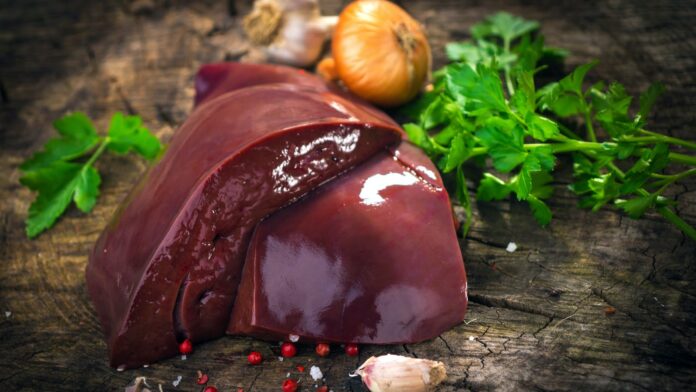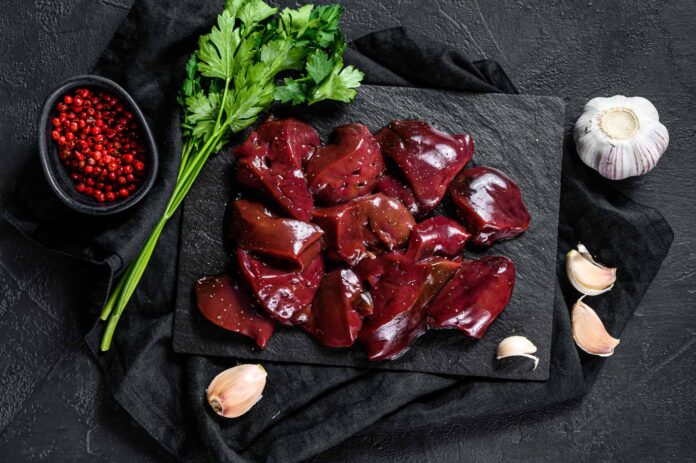I swear, every time I write about liver, I get a ton of hate mail . I’m not surprised, since liver is one of the most reviled foods in the world. It’s the only food I know where people will email and tell me how it tastes like crap. I get asked a lot of questions about it. Should I eat liver? How can I get the liver I want? How many times a week? Can I eat liver every day?
It’s not fun to make a terrible first impression on someone, but with liver you don’t even have that option. Liver, that is. You see, most people consider liver a disgusting and revolting food, and we’re all guilty of eating it without a second thought.
Many people consider liver the most disgusting food they’ve ever eaten. Let’s face it, we’ve all had that moment where someone’s turned their nose up at a particular food that we really enjoy, but we didn’t know any better, so we still indulged.
This is a story of growing up in an era when we’ve all become obsessed with the idea of “clean eating” and “toxic food”, when some foods are good and some foods are bad, and where whenever you eat “bad” food, you’re going to be punished. Not only are you going to be punished for eating the “bad” food, but it’s going to make you sick, because “bad” food is bad for you.. Read more about the liver keto diet and let us know what you think.
Are you a fan of the liver? The answer will almost certainly be no if you’re like almost half of the Anglo-Western population.
In fact, studies in several nations – the United Kingdom, the United States, and Canada – regularly indicate that liver is among the top five most disliked meals, often even first.
This is a pity, in my view, since various kinds of liver – cow, lamb, and chicken – are inexpensive, delicious, and healthy foods that are ideal for a low-carb keto diet. Because of assumptions or previous aversions, many individuals lose out on a beneficial complement to their LCHF diet. As a result, this article is a homage to the liver.
I hope some of my readers will appreciate hearing about my passion for it, as well as its nutritional benefits, as well as some suggestions on what to purchase, how to prepare it, and some safe and simple cooking methods. (The liver and other by-products are naturally revered in certain cultures, such as Germany, Italy, and France – particularly around Lyon.)
But first, let’s take a look at the prevalent anti-Anglo-American sentiment.
Is it a matter of philosophy or personal experience that makes you disgusted?
On the basis of theory alone, many individuals dislike liver. They may not even attempt a meal like liver with onions if they’re under 45.
The concept of touching, preparing, and eating vibrating, jelly-like, bleeding, toxin-filtering organ meat is revolting. The concept of touching, preparing, and eating vibrating, jelly-like, bleeding, toxin-filtering organ meat is revolting.
A teenage buddy who follows a keto diet describes it as “disgusting.” I know I should eat liver, but I can’t bring myself to prepare it, much alone eat it, she admits, despite the fact that she’s never had it except in pâté. She shuddered just thinking about it.
Some people’s dislike of liver stems from their upbringing, particularly those over 50 who were routinely given it until the 1970s. Many family households had liver as a staple meal, and it was often on mom and dad’s menu. My mother used to offer veal or chicken liver every two weeks when I was a kid in the 1960s and early 1970s.
Liver was generally despised due to its strong, often metallic flavor, gritty texture, and the fact that many moms overcooked it until it turned rubbery before serving it with onions, another dish that many children despised. It was the sort of meal that my pals recalled spitting into a handkerchief or feeding to the family dog in secret.
It was also a dinner during which some domineering parents threatened to punish their children if they did not remain at the table until the conclusion of the meal. A acquaintance in her fifties remembers a heated argument with her strict father about his liver, which she has since avoided.
I despise it because it conjures me images of an authoritarian and strict educational system that has damaged so many of us. When I ran away from home, I had to argue with my father and be spanked, which was typically me.
Bond for delivery
I used to adore liver as a child, which was odd since I was generally a fussy eater. I couldn’t eat zucchini, beets, boiled spinach, Brussels sprouts, or mashed potatoes, but I could eat liver.
My mother’s liver was never rubbery or overdone, and she always prepared it to perfection. It was comfort food for me; on a cold Canadian winter night, a supper of liver, bacon, and onions kept me warm from head to toe.
When my husband and I met in the 1980s, we had an odd bond: we both loved liver as a kid, despite the fact that everyone we knew despised it.
My mother stopped serving liver on a regular basis in the mid-1970s, owing to its high cholesterol and fat content. Health officials encouraged people to limit the sources of cholesterol and fat in our meals for the benefit of our health at the beginning of the thoughtless era of low-fat goods.
She followed this bad counsel. There is also worry that, as industrial farming and the use of antibiotics and hormones in animal feed become more common, the liver will become more concentrated with these substances. This worry is not in vain, and I strive not to consume liver from CAFOs to this day (domestic farms).
Grilled chicken liver with zucchini and other garden veggies, as prepared by Anna

Despite my fondness for liver, I had not eaten it in decades until this year. I began searching for additional excellent sources of high-quality, healthy, and cheap animal proteins during the third year of my keto diet, and that’s how liver came back into my life.
While I rarely see products for sale in large grocery stores – and would never buy them anyway due to meat relationships with CAFOs – our small local butcher, who specializes in products from local farms that practice humane and regenerative farming, always has a great selection at very reasonable prices.
A 275-gram bag of organic chicken livers in the freezer costs approximately $4, which is plenty to serve my husband and me with leftovers for lunch. Because the butcher shop is on my way home from work, I take my liver there at least once every two weeks to have it prepared for supper.
The liver’s supercapacitors are a kind of capacitor

Liver, in fact, is a ketone superfood. It is one of the most nutrient-dense foods on the planet. Here are some of the liver’s superpowers:
- It’s a high-protein food, with 26 grams of protein in 100 grams of chicken liver and 29 grams of protein in 100 grams of cow liver.
- It includes all of the B vitamins, with a high concentration of vitamin B12, which is required for the proper functioning of all body cells and can only be derived organically from animal sources. The content of the liver is 10 times or more than that of other typical sources.
- It’s high in folate (vitamin B9), which is needed for a variety of cellular functions and is particularly vital for women of reproductive age.
- It has the most vitamin A of any meal and is essential for the health of your eyes, skin, teeth, bones, immune system, and cells. (If you enjoy liver, don’t eat it every day since too much vitamin A may be harmful.)
- It’s high in vital minerals including iron, selenium, chromium, phosphorus, and copper, all of which are necessary for the body’s healthy functioning.
Given all of these characteristics, it’s no surprise that the Inuit of northern Canada and the Sami of northern Scandinavia regarded the liver and other animal parts so highly. Animals seem to be intuitively aware of their advantages. Predators like lions, wolves, and other predators rip open their prey’s belly to devour the organs first, particularly the liver.
The most effective methods for overcoming distaste
Here are some suggestions for getting excellent results if you’ve never cooked with liver before. (YouTube also has a lot of liver cooking videos and recipes from all around the globe.)
-
- Start with chicken liver, which is the simplest to prepare and has the mildest taste. Move on to different types of chicken liver after you’ve mastered chicken liver.
- If the liver’s consistency makes cooking difficult, you may prepare it while it’s still slightly frozen, or keep it cold in a container with ice and water.
- Remove the connective tissue between the two lobes of the chicken liver using a sharp knife. A excellent video demonstrating how to clean chicken livers can be found here.
- My mother, for example, usually marinates the liver in milk before cooking it. A marinade made with equal parts olive oil, apple cider vinegar, and Dijon mustard is the finest. Acid, such as lemon juice or vinegar, masks or eliminates the metallic taste of liver, which is disliked by many individuals.
- Baking pâté is a great method to have a taste of liver for the first time. Pate, as my daughter puts it, is eating liver without realizing it!
- While there are many complex recipes that call for raw eggs and an oven water bath, you don’t need to go that route to achieve excellent results.
- I prepare a basic pate by finely slicing half an onion and a garlic clove and sautéing them till soft in butter in a skillet. The water, bay leaf, Provencal herbs, and peeled chicken livers are then added to the pan and broiled until slightly pink in the center. Then I placed the chopped livers and onions in a food processor with melted butter, brandy or cognac, and whipping cream (enough to make it creamy and smooth when processed), and arrange them in ramekins with melted butter drizzled on top. It will keep for a week in the refrigerator and many months in the freezer.
- We like grilled chicken livers in the summer. Clean the chicken livers and marinate them in the dressing for 8 to 24 hours before threading them on skewers and grilling them. Cherry tomatoes and onions are often grilled and served with a simple salad. It’ll be fine, it’ll be fine. Wrapping chicken livers with bacon, threading them on a skewer, and grilling them is another great method to prepare them.
- Chop the liver into tiny pieces and add them to ground beef for burgers, bologna sauce, stews, or tacos if you want the nutritional benefits but not the taste or texture.
- A traditional dish is liver with onion. I begin by cooking four or five pieces of bacon, then setting them aside and trimming away part of the grease. The entire onions are next sautéed until tender, then the peeled liver is added and cooked until light pink. Finally, I add approximately 14 cup of whipped cream to the pan to remove the glaze and create a thick, delicious sauce. I served it with bacon, veggies or lettuce, and sautéed tomatoes with herbs (fried in a separate pan), which are a great alternative to the ketchup that many of us are accustomed to.
With keto seed crackers, Anna’s chicken liver pate.Are you prepared to include liver into your ketogenic diet? What are some of your favorite dishes? How did you overcome your aversion to disgust? Please share your thoughts and suggestions in the comments section below.
Ann Mullens is a writer who lives in the United States.
Liver is a widespread food that is reviled by vegans, vegetarians and even some meat eaters. It’s also a food that has become a mainstay in the human diet. From our earliest days, we’ve loved liver: it’s nutritious, it’s tasty and, at its peak, it only has to travel a short distance through our bodies.. Read more about chicken liver carbs keto and let us know what you think.




